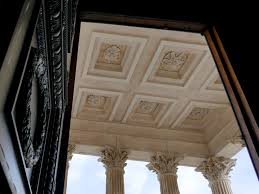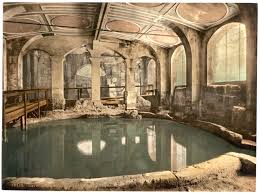Ancient Roman Senate House: The Roman Senate was a political institution in ancient Rome. It was one of the most enduring institutions in Roman history, being founded in the first days of the city traditionally founded in 753 BC.

It survived the overthrow of the kings in 509 BC, the fall of the Roman Republic in the 1st century BC, the split of the Roman Empire in 395 AD, and the fall of the Western Roman Empire in 476 AD.
Ancient Roman Senate House
During the days of the kingdom, it was little more than an advisory council to the king. The last king of Rome, the tyrant Lucius Tarquinius Superbus was overthrown following a coup led by Lucius Junius Brutus.

The Senate is believed to have been created by Rome’s first king, Romulus, initially consisting of 100 men. The descendants of those 100 men subsequently became the patrician class. Rome’s fifth king, Lucius Tarquinius Priscus, chose an additional 100 senators. They were chosen from the minor leading families and were accordingly called the minor Gentium.

During the early Republic, the Senate was politically weak, while the executive magistrates were quite powerful. Since the transition from monarchy to constitutional rule was probably gradual, it took several generations before the Senate was able to assert itself over the executive magistrates.
Historical Facts of Senate House
By the middle Republic, the Senate reached the apex of its republican power. The late Republic saw a decline in the Senate’s power, which began following the reforms of the tribunes Tiberius and Gaius Gracchus.

Rome’s seventh and final king, Lucius Tarquinius Superbus, executed many of the leading men in the Senate and did not replace them, thereby diminishing their number. However, in 509 BC Rome’s first consuls, Lucius Junius Brutus and Publius Valerius Publicola chose from amongst the leading equities new men for the Senate, these being called conscription, and thus increased the size of the Senate to 300.
Roman Senate House
The Roman Senate house Diocletian had built is all made of brick, although when it was new, it would have had a coating of marble and stucco all over it. The marble floor is still there. The colored marble used in this floor came from many different parts of the Roman Empire, to demonstrate that the Senate controlled so many different places and was very powerful.
Types of Stone used
The reddish-purple stone was porphyry from Egypt, while the yellow marble was from Nubia, south of Egypt located in the modern day Ethiopia.

The green marble or serpentine was from Asia Minor or the modern day Turkey. The Senate house also had great big bronze doors on it.
The Curia Rome
The Curia was the name of the Roman Senate House. This place was the center where all the powers were concentrated. Even the earliest modern sketching did not significantly improve the public’s understanding of the Senate building.

Although Sallustio Peruzzi designed a layout of the building in the sixteenth century, the map neither shows few measurements nor does it display any architectural features to assist the viewer in understanding what the Curia may have looked like.
More info on- Roman Senate building interior



